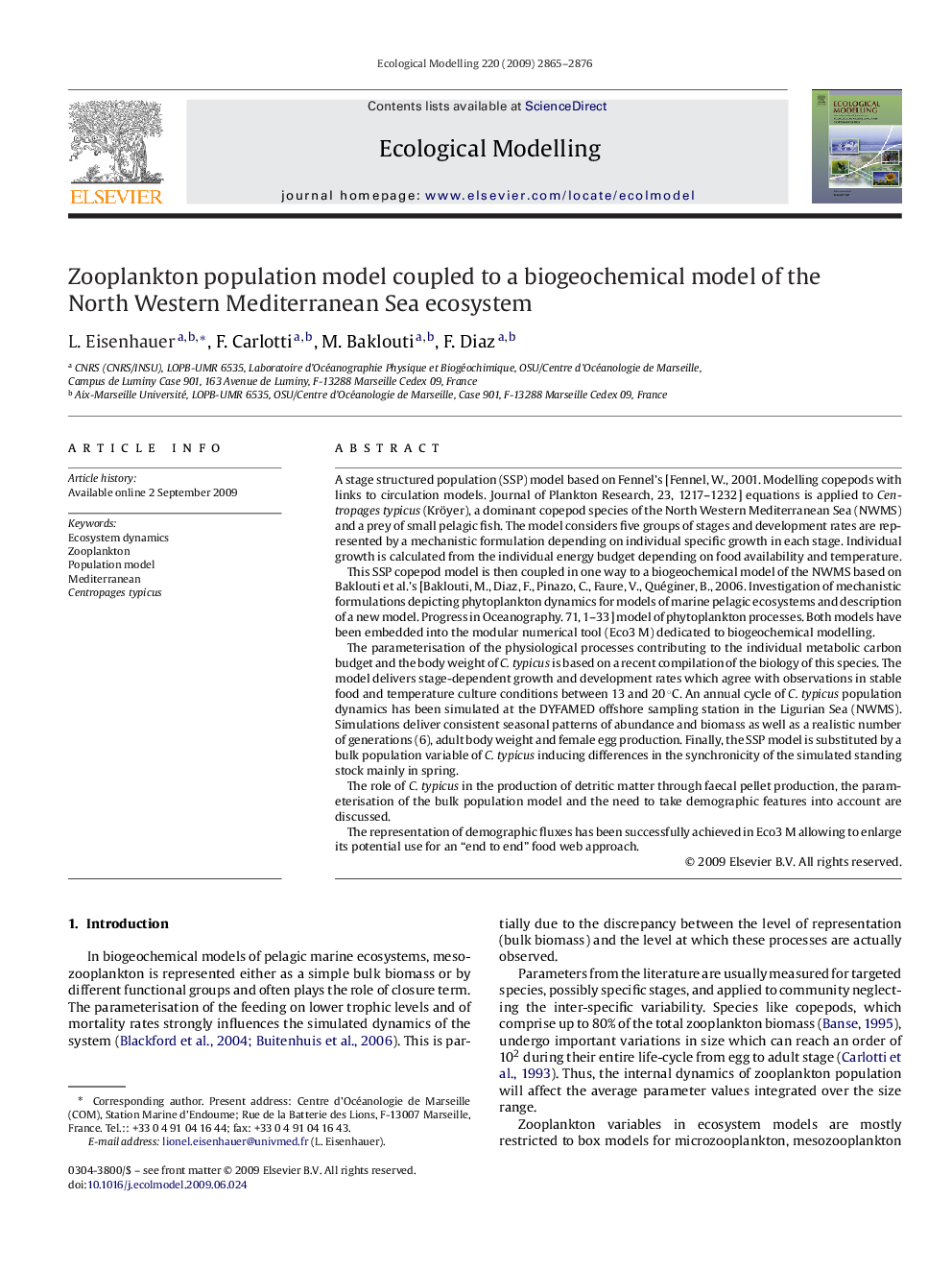| Article ID | Journal | Published Year | Pages | File Type |
|---|---|---|---|---|
| 4377629 | Ecological Modelling | 2009 | 12 Pages |
A stage structured population (SSP) model based on Fennel's [Fennel, W., 2001. Modelling copepods with links to circulation models. Journal of Plankton Research, 23, 1217–1232] equations is applied to Centropages typicus (Kröyer), a dominant copepod species of the North Western Mediterranean Sea (NWMS) and a prey of small pelagic fish. The model considers five groups of stages and development rates are represented by a mechanistic formulation depending on individual specific growth in each stage. Individual growth is calculated from the individual energy budget depending on food availability and temperature.This SSP copepod model is then coupled in one way to a biogeochemical model of the NWMS based on Baklouti et al.’s [Baklouti, M., Diaz, F., Pinazo, C., Faure, V., Quéginer, B., 2006. Investigation of mechanistic formulations depicting phytoplankton dynamics for models of marine pelagic ecosystems and description of a new model. Progress in Oceanography. 71, 1–33] model of phytoplankton processes. Both models have been embedded into the modular numerical tool (Eco3 M) dedicated to biogeochemical modelling.The parameterisation of the physiological processes contributing to the individual metabolic carbon budget and the body weight of C. typicus is based on a recent compilation of the biology of this species. The model delivers stage-dependent growth and development rates which agree with observations in stable food and temperature culture conditions between 13 and 20 °C. An annual cycle of C. typicus population dynamics has been simulated at the DYFAMED offshore sampling station in the Ligurian Sea (NWMS). Simulations deliver consistent seasonal patterns of abundance and biomass as well as a realistic number of generations (6), adult body weight and female egg production. Finally, the SSP model is substituted by a bulk population variable of C. typicus inducing differences in the synchronicity of the simulated standing stock mainly in spring.The role of C. typicus in the production of detritic matter through faecal pellet production, the parameterisation of the bulk population model and the need to take demographic features into account are discussed.The representation of demographic fluxes has been successfully achieved in Eco3 M allowing to enlarge its potential use for an “end to end” food web approach.
